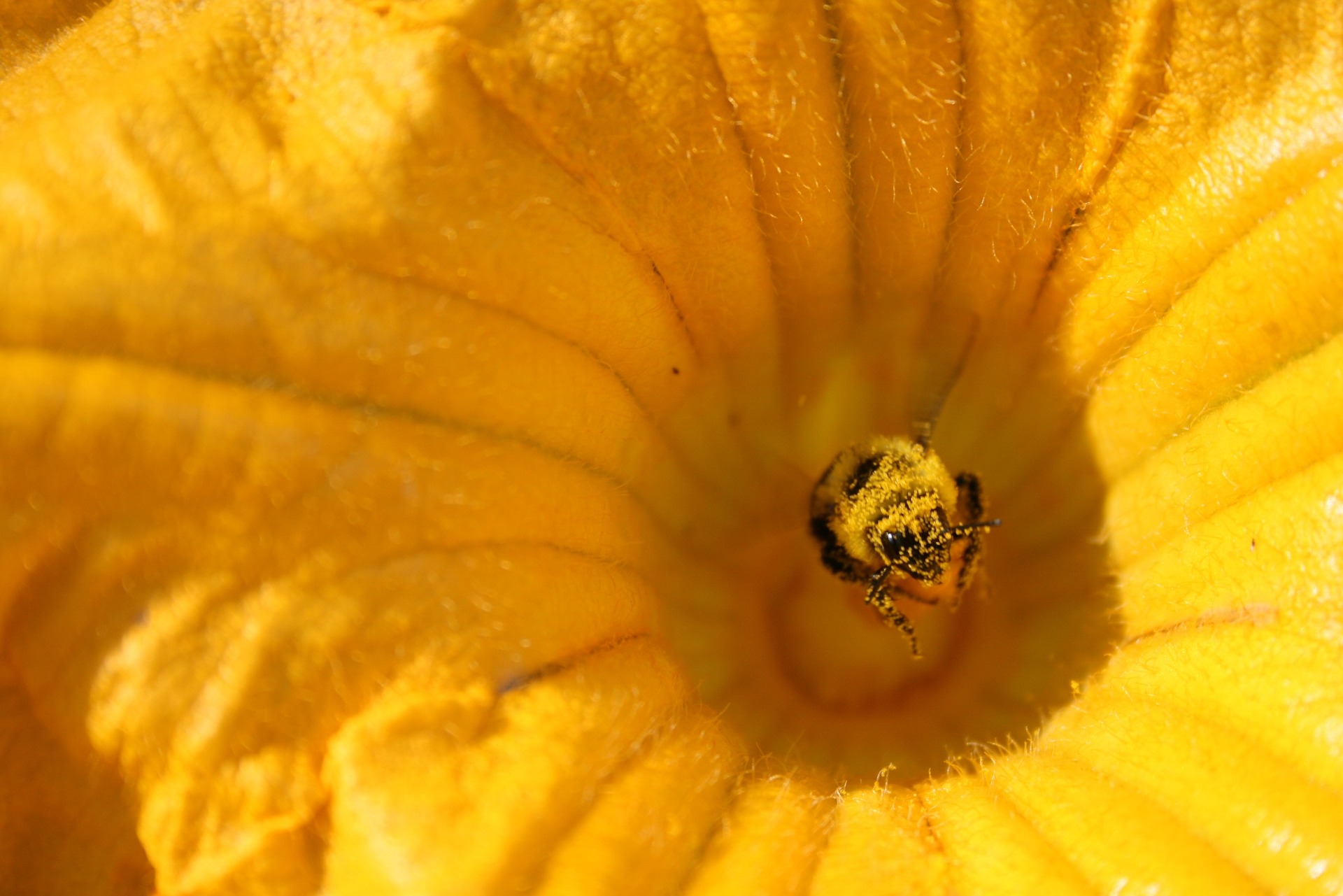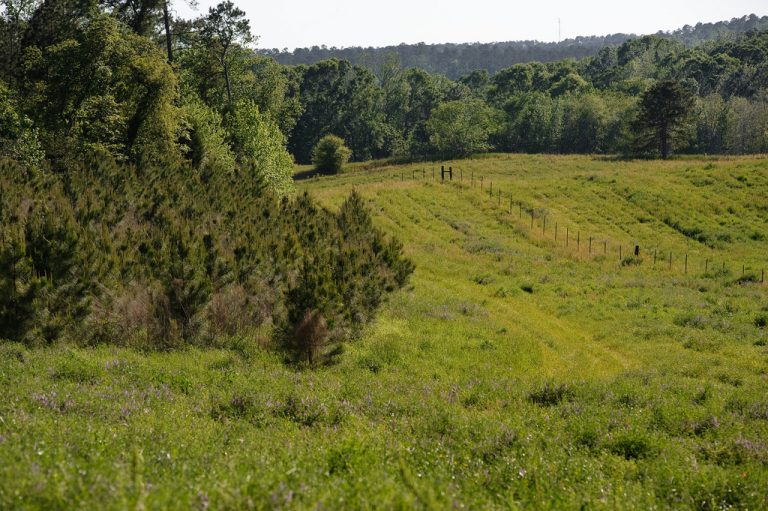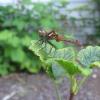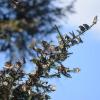The idea of robotic pollinators ignores the many wild plants in meadows, prairies, hedgerows, and forests.
This piece originally appeared in the Spring 2018 edition of Xerces’ biannual publication Wings. It is reproduced here with minor updates. Click to view the full Spring 2018 issue of Wings.
Earlier this year, Walmart filed a patent application for drones that are designed to pollinate crops by carrying pollen from one plant to another, detecting flower locations with sensors and cameras. More recently, there has been a surge in news articles analyzing the concept of “robobees,” which is also being researched in labs around the world, from Harvard to Russia’s Tomsk Polytechnic University. Although several organizations are exploring this concept as a way to address the alarming decline in honey-bee populations, it seems highly unlikely that robotic pollinators could actually provide a solution.

First, in crop plants alone there are myriad varieties of flower shapes, sizes, and arrangements. For a sense of this diversity, just think of squash flowers, sunflowers, apple blossoms, and tomato flowers. Bees have coevolved with plants to collect and transport pollen efficiently. How many different types of drones would one farmer need? We are a very long way from having technology that will accomplish the task that bees already perform.
And the problem is more complex than just crops. At least 85 percent of all terrestrial plant species either require or strongly benefit from some form of animal pollination, and the idea of robotic pollinators ignores the many wild plants in meadows, prairies, hedgerows, and forests. Focusing solely on crop pollination and failing to take the pollination of native plants into account may well lead to a deterioration in the plant communities that make up the very fabric of our environment.
A further issue is that the western honey bee is just one of the thousands of species of bees—not to mention the flies, beetles, butterflies, and many other species that make up the community of pollinators. Developing a technological substitute for honey-bee pollination barely scratches the surface of global plant–pollinator interactions.
In fact, a recent study, published in Science by a team led by Dr. Rachel Winfree of Rutgers University found that to provide pollination of crops alone we need a large diversity of bees, both common species and less common ones.
An essay by Dr. Claire Kremen of the University of California Berkeley in the same issue of Science underscores the changes we need to make to ensure that our landscapes can support the diversity and numbers of bees our crops require. Kremen points out that it is vital that we move away from monocultures and fencerow–to-fencerow cultivation toward regenerative farming that incorporates hedgerows, flowering strips, and other conservation practices to build soil fertility and support much-needed pest control and pollination services.
Another aspect of this discussion should focus on the cost, and whether robotic bees are the best investment—or even a reasonably effective one—at a time when the threats are real and seem to be growing. What could be achieved by funding sustainable solutions rather than pursuing technological approaches?
As one of the world’s largest retailers, Walmart has global procurement power that could provide incredible opportunities, both to restore pollinator populations by encouraging biologically diverse and regenerative agriculture practices of its suppliers, and to promote a more diverse range of food choices.
The first of these has an existing precedent. The Xerces Society works closely with several major food companies to restore habitat for pollinators and beneficial insects, protected from pesticides, on large-scale farms. The results are farm operations that increasingly produce and sustain their own wild resident pollinator populations.
The second opportunity, providing a broader diversity of food choices, would also be a powerful model for reengineering our overly simplified food system. Products made from buckwheat, flax, carob, lentils, jackfruit, grain amaranth, and countless other less common crop species typically require few pesticides, and many are highly productive food sources for bees and other beneficial wildlife. A food system designed for such choices would inherently be built upon a biologically diverse and resilient landscape. These ecologically beneficial models are already proven in agroforestry, alley cropping, silvopasture, and other diversified farm systems. Moreover, such models arguably provide people with delightful food that is both healthier and more interesting.

The flower-rich meadows that support bees, butterflies, and most other pollinators bring benefits beyond crop pollination. If we consider the fact that an aesthetically beautiful wildflower habitat that supports wildlife, sequesters carbon, and produces oxygen can be established in most parts of the United States for around ten cents per square foot, then the best return on investment is clear. Rather than build drones that don’t do any of those things, we should plant meadows.




